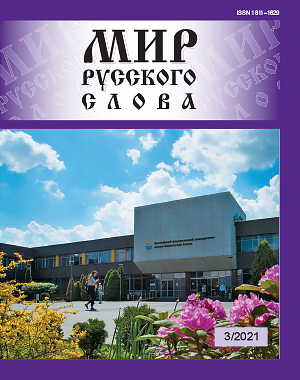Particularities of the Contrast Using in Social Advertising Discourse
DOI:
https://doi.org/10.24412/1811-1629-2021-3-22-31Abstract
The article presents some linguistic forms of social advertising texts construction, which may help to realize advertising discourse’s main idea, i.e. the opposition of two semantic and logical components: a model of behavior, which is dangerous for human life and health or is not approved by the society for ethical reasons, on the one hand, and an ideal pattern approved by society, introduced as a role model, on the other hand. All this is due to the main goal of social advertising communication: to consolidate the ideas about the desired (ideal) fragment of reality in the mind of the target addressee. The means of contrast relations expression belong to many system levels, and the authors, respectively, discuss the syntactic, visual and axiological levels. Among the linguistic forms of constructing contrast, the most frequent models are making contrast by using the negation of “ne” (not): ‘chitat’’ / ‘ne chitat’’ (to read / not to read); the opposition of the direct and figurative meanings of the word, and paronomasia. The semantic core of contrast is formed by antithesis. Besides the linguistic antonyms, social advertising contains a lot of contextual antonyms that are taking part in the antithesis formation. In conclusion, the authors analyze stylistic figures that help to make antithesis more expressive, such as zeugma, amphibole, and irony.
Keywords:
social advertising, contrast, antithesis, basic alternative, antonyms, stylistic figures of speech
Downloads
References
Литература
References
Downloads
Published
How to Cite
Issue
Section
License
Articles of "The World of Russian Word" are open access distributed under the terms of the License Agreement with Saint Petersburg State University, which permits to the authors unrestricted distribution and self-archiving free of charge.




